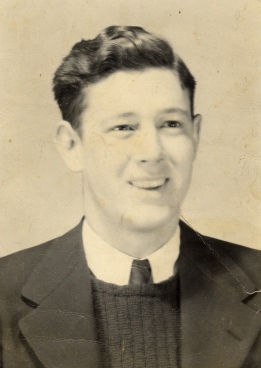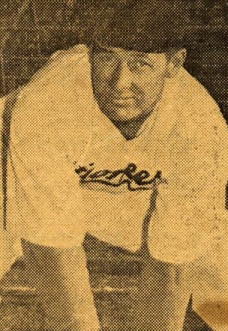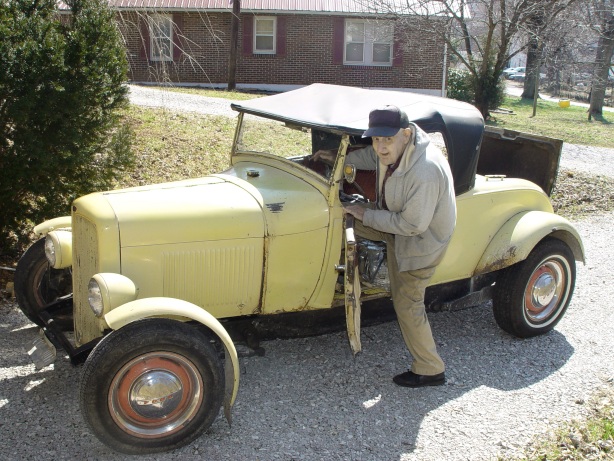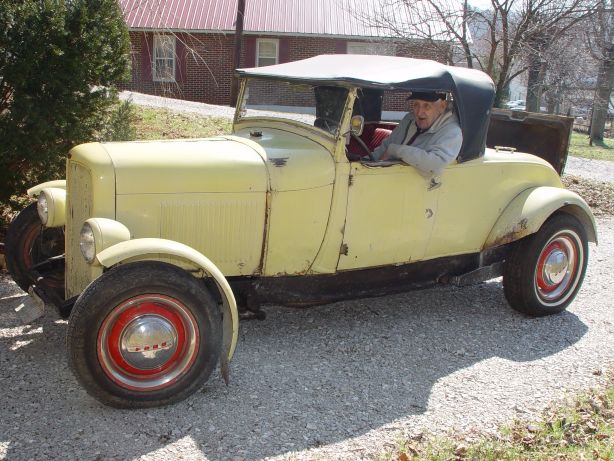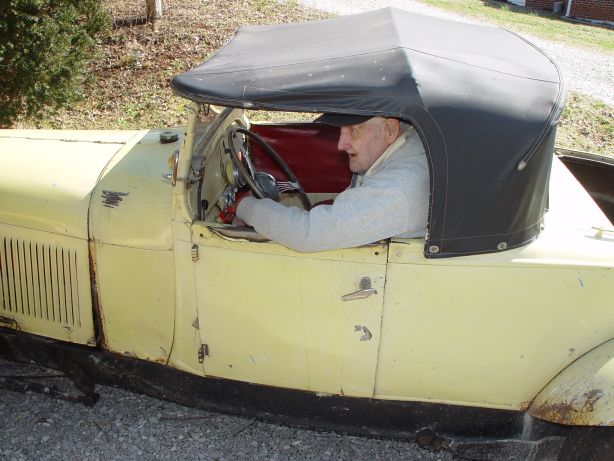|
Randall
told me how Malcolm Clark (who later became Dr. Malcolm Clark) had
borrowed the car one day and as Randall had to walk everywhere he went,
Malcolm picked him up on the side of the road, and that’s how he got to
ride in the car the first time. Years later, the car was junked and ended
up in Seeb Boykin’s garden spot with weeds growing up through it. When
Randall discovered the car there, he asked about it and was told Roy
Pennington was supposed to be coming back to buy the car. One day not long
after this, Roy was passing by Randall’s father’s garage, and Randall
stopped him to ask if he was still interested in the car. Roy told him no,
he wasn’t. He then went back to Mr. Boykin’s, paid him the $15 – the same
price that had been quoted to Roy, and came back later with a truck to
haul it home. He completely restored the car and is still driving it
today. It is on its third engine now, and while I was visiting in the
Dulworth home, he went down to the basement and demonstrated to me the
“Ooga” horn the car has. He has driven the car several times to
Indianapolis to the races, and he told me the car would easily do 100
miles an hour.
Carl French
Ledbetter did an article about Randall and the roadster in a 1992 issue of
Current Lines, the quarterly publication that comes from Upper
Cumberland Electric Membership Cooperative. A picture of Randall sitting
in the car was published on the front page of this magazine, and beneath
the picture, these words were printed: “With mileage equal to 10 trips
around the world on used parts, this car may hold a world record for
durability.”
Randall
also has pictures of some small cars he refers to as “micro midgets” that
were raced when the Overton County Fairgrounds used to be located where
the Volunteer Foam plant is now. These small cars were mostly handmade and
some of the fellows who raced them were Burns Averitt, Bill Reeser, and
Larry Stephens. Randall and the 1929 Roadster are frequently seen driving
around on the streets of Livingston. He said he doesn’t get the car out
when the weather is bad, but when he does take it out for a spin, you can
count on heads turning to get a good look.
Although I
had never met Randall personally until the day I went to visit in their
home, it seems I can always remember seeing him driving around in that
car. I suppose I probably knew his name, but not much more than that he
owned that neat little car. I had no idea that he was such an accomplished
baseball player. Discoveries such as this are an added bonus for me that
comes with doing this journal.
It was a
pleasure to be so warmly invited into the Dulworth home and to now share
his story with others, who are probably just as surprised as I was to
learn that the fellow in the little yellow roadster not only owns a neat
little car, but is someone we should definitely consider a celebrity right
here in our midst. And I would like to add that Randall is not at all a
boastful or bragging sort of fellow that he has every right to be with
having become such a highly sought after baseball player. He’s a gentle,
quiet man who was glad to share his story with me, but did so in a
matter-of-fact type way which left a much greater impression.
I consider
it an honor to have had the opportunity to do this story, and for which I
extend my thanks to Roy Pennington for getting word to me through his
daughter, Donna, that a story about Randall would be something I should
do.
Randall’s
life is a good example of how something as simple as tossing rocks in the
air and hitting them with a stick as a young boy growing up in the Willow
Grove Community leads to great achievements and an outstanding career in
America’s favorite pastime.
He is a citizen that the Town of
Livingston should be very proud to claim as one of their own.
|
